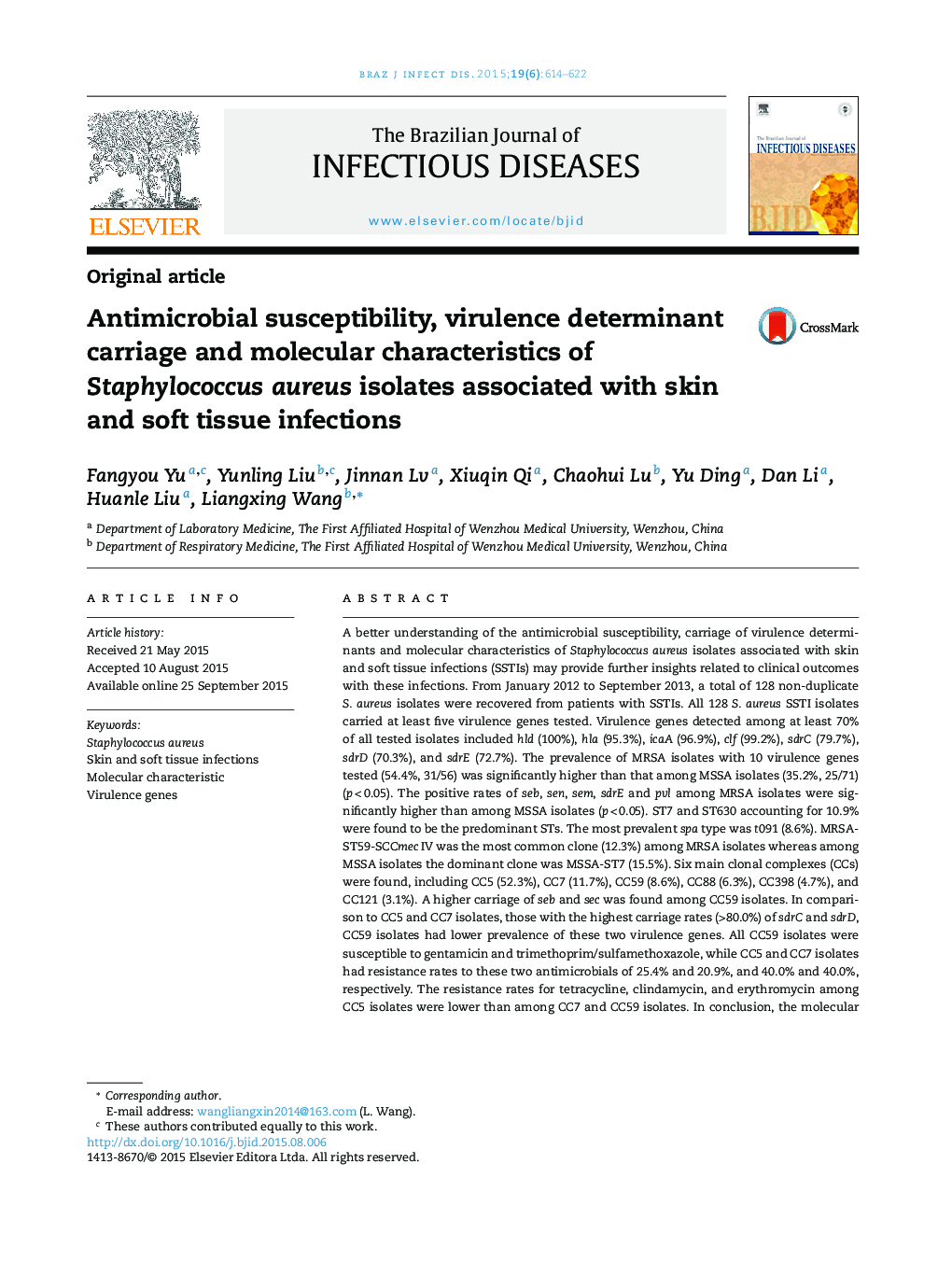| کد مقاله | کد نشریه | سال انتشار | مقاله انگلیسی | نسخه تمام متن |
|---|---|---|---|---|
| 3343875 | 1591186 | 2015 | 9 صفحه PDF | دانلود رایگان |
A better understanding of the antimicrobial susceptibility, carriage of virulence determinants and molecular characteristics of Staphylococcus aureus isolates associated with skin and soft tissue infections (SSTIs) may provide further insights related to clinical outcomes with these infections. From January 2012 to September 2013, a total of 128 non-duplicate S. aureus isolates were recovered from patients with SSTIs. All 128 S. aureus SSTI isolates carried at least five virulence genes tested. Virulence genes detected among at least 70% of all tested isolates included hld (100%), hla (95.3%), icaA (96.9%), clf (99.2%), sdrC (79.7%), sdrD (70.3%), and sdrE (72.7%). The prevalence of MRSA isolates with 10 virulence genes tested (54.4%, 31/56) was significantly higher than that among MSSA isolates (35.2%, 25/71) (p < 0.05). The positive rates of seb, sen, sem, sdrE and pvl among MRSA isolates were significantly higher than among MSSA isolates (p < 0.05). ST7 and ST630 accounting for 10.9% were found to be the predominant STs. The most prevalent spa type was t091 (8.6%). MRSA-ST59-SCCmec IV was the most common clone (12.3%) among MRSA isolates whereas among MSSA isolates the dominant clone was MSSA-ST7 (15.5%). Six main clonal complexes (CCs) were found, including CC5 (52.3%), CC7 (11.7%), CC59 (8.6%), CC88 (6.3%), CC398 (4.7%), and CC121 (3.1%). A higher carriage of seb and sec was found among CC59 isolates. In comparison to CC5 and CC7 isolates, those with the highest carriage rates (>80.0%) of sdrC and sdrD, CC59 isolates had lower prevalence of these two virulence genes. All CC59 isolates were susceptible to gentamicin and trimethoprim/sulfamethoxazole, while CC5 and CC7 isolates had resistance rates to these two antimicrobials of 25.4% and 20.9%, and 40.0% and 40.0%, respectively. The resistance rates for tetracycline, clindamycin, and erythromycin among CC5 isolates were lower than among CC7 and CC59 isolates. In conclusion, the molecular typing of S. aureus SSTI isolates in the present study showed considerable heterogeneity. ST7 and ST630 became prevailing clones. Different S. aureus clones causing SSTIs were associated with specific antimicrobial resistance and virulence gene profiles.
Journal: The Brazilian Journal of Infectious Diseases - Volume 19, Issue 6, November–December 2015, Pages 614–622
